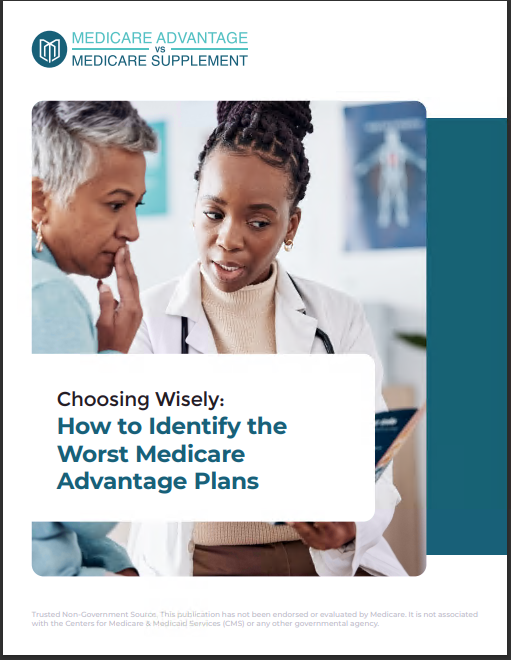Key Takeaways
- Delaying enrollment in Medicare Part B can lead to higher costs, including late enrollment penalties and gaps in health coverage.
- Planning your Medicare Part B enrollment timely can help avoid unnecessary expenses and ensure you have access to essential healthcare services.
Waiting Too Long for Medicare Part B? Here’s How It Could Impact Your Wallet
Enrolling in Medicare is a significant decision that many people face as they approach retirement age. While Medicare Part A typically comes automatically for those eligible, Medicare Part B requires a bit more attention. Failing to sign up at the right time can have financial consequences, leading to higher premiums and out-of-pocket expenses. This article will explore the potential impact on your wallet if you delay Medicare Part B enrollment and provide practical tips on how to avoid costly mistakes.
What is Medicare Part B?
Medicare Part B is the portion of Medicare that covers outpatient medical services. These include visits to doctors, preventive care, medical supplies, and services that Part A (hospital insurance) doesn’t cover. While Medicare Part A is often premium-free for those who have paid Medicare taxes for a sufficient period, Part B usually requires a monthly premium. Understanding what Medicare Part B offers is crucial for those approaching 65 to avoid unexpected costs.
The Financial Consequences of Delayed Enrollment
The longer you wait to enroll in Medicare Part B, the more it can affect your finances. One of the primary consequences of delaying enrollment is the late enrollment penalty. This penalty applies to individuals who don’t sign up for Part B during their Initial Enrollment Period (IEP) and do not have other credible health coverage, such as through an employer.
Late Enrollment Penalty
The late enrollment penalty can be substantial. For every 12-month period that you are eligible for Part B but do not enroll, your premium increases by 10%. This increase is not temporary—it lasts for the duration of your time on Medicare. Over the years, this can add up, potentially costing you thousands of dollars in additional premiums.
For example, if you delay enrolling for three years after your IEP, you could be looking at a 30% increase in your monthly premium. With the standard premium being a set percentage based on your income, this penalty can significantly affect your long-term financial health.
Potential Gaps in Coverage
Delaying Medicare Part B can also leave gaps in your health coverage, particularly if you’re retiring and lose employer-sponsored health insurance. Without Part B, you may be responsible for covering medical costs out of pocket until your next chance to enroll during the General Enrollment Period (GEP), which runs from January 1 to March 31 each year.
Even though you can sign up for Part B during the GEP, coverage doesn’t begin until July 1, meaning there could be a significant period during which you’re responsible for all healthcare costs. Without comprehensive insurance, routine doctor visits, preventive care, and necessary medical services could strain your budget.
Understanding the Enrollment Periods
To avoid penalties and gaps in coverage, it’s essential to be aware of Medicare’s various enrollment periods. Knowing when you’re eligible and taking timely action will protect you from higher costs.
Initial Enrollment Period (IEP)
The IEP is the first opportunity most people have to sign up for Medicare Part B. It lasts for seven months, beginning three months before your 65th birthday, including your birthday month, and ending three months after. Signing up during this window ensures that you won’t face late enrollment penalties or coverage gaps.
Special Enrollment Period (SEP)
For individuals who are still working and have employer-sponsored health insurance, there’s a Special Enrollment Period (SEP). This period allows you to enroll in Medicare Part B without penalties when you retire or lose your employer coverage. You have eight months to sign up after your employer-sponsored coverage ends, which helps you avoid the late enrollment penalty and provides continuity in your healthcare coverage.
General Enrollment Period (GEP)
If you miss both the IEP and SEP, you can sign up for Medicare Part B during the General Enrollment Period (GEP). However, as mentioned earlier, this can lead to coverage gaps and the late enrollment penalty, so it’s better to sign up during your IEP or SEP if possible.
Employer Coverage and Medicare Part B: What You Should Know
Many people nearing retirement age continue to work and receive health coverage from their employers. In this case, you might wonder whether you need to sign up for Medicare Part B right away. The answer depends on the size of your employer.
Large Employers (20+ Employees)
If you work for a company with 20 or more employees, your employer’s health insurance is considered “primary,” meaning it will cover your medical expenses first. You can delay enrolling in Medicare Part B without incurring penalties, as long as you sign up during the SEP after your employment or employer coverage ends.
Small Employers (Fewer than 20 Employees)
For those working for smaller employers with fewer than 20 employees, Medicare becomes the primary insurer when you turn 65. In this case, it’s crucial to sign up for Medicare Part B as soon as you’re eligible. If you don’t, your employer coverage will become secondary, meaning it will only cover costs that Medicare doesn’t pay, and you could be stuck with large medical bills.
The Cost of Skipping Part B Altogether
Some individuals, particularly those with other sources of insurance like Veterans Affairs (VA) benefits or retiree coverage, might think they don’t need Medicare Part B. While this may be true in some cases, skipping Part B entirely can still come with financial risks.
Coordination of Benefits
Medicare Part B often works with other forms of health insurance to provide full coverage. Without it, you may find that your other insurance plans don’t cover certain services or require higher out-of-pocket payments. For example, VA benefits only cover care at VA facilities, meaning you might need Part B for care outside the VA system.
Risk of Future Coverage Loss
Another risk of forgoing Medicare Part B is losing your current coverage. Some retiree plans, for example, may require that you enroll in Part B as soon as you’re eligible. If you don’t, the retiree plan may drop you or significantly reduce your benefits, leaving you to pay for most of your healthcare expenses.
How to Avoid Financial Pitfalls
The best way to avoid the financial pitfalls of Medicare Part B is by being informed and taking action early. Here are some strategies to help you stay ahead:
Enroll During Your IEP
For most people, signing up during the Initial Enrollment Period is the best way to avoid late enrollment penalties and ensure continuous coverage. It’s important to mark your calendar for this seven-month period to avoid missing your window.
Understand Your Current Health Coverage
If you’re still working or have other forms of insurance, be sure to understand how your current plan coordinates with Medicare Part B. Contact your benefits administrator to clarify whether your plan remains primary or secondary once you become eligible for Medicare. Knowing these details can help you make an informed decision about when to enroll.
Plan Ahead for the SEP
If you have employer coverage when you turn 65, make sure you’re aware of your Special Enrollment Period options. Planning ahead will give you a smooth transition from your employer plan to Medicare Part B without facing gaps in coverage or penalties.
Acting Now Can Save You Money
Ultimately, delaying Medicare Part B can have significant financial consequences, but these can be avoided with a little planning. Whether you’re nearing 65 or still working with employer coverage, understanding the enrollment periods and how they apply to you will help protect your wallet from unnecessary costs.










